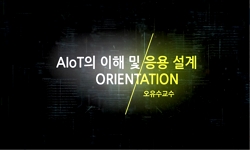The purpose of this research is to examine conceptual metaphors with BITE and CHEW in two typologically different languages, English and Korean (BITE and CHEW in English and MWUL- ‘BITE’ and SSIP- ‘CHEW’ in Korean). There has been some researc...
http://chineseinput.net/에서 pinyin(병음)방식으로 중국어를 변환할 수 있습니다.
변환된 중국어를 복사하여 사용하시면 됩니다.
- 中文 을 입력하시려면 zhongwen을 입력하시고 space를누르시면됩니다.
- 北京 을 입력하시려면 beijing을 입력하시고 space를 누르시면 됩니다.
부가정보
다국어 초록 (Multilingual Abstract)
The purpose of this research is to examine conceptual metaphors with BITE and CHEW in two typologically different languages, English and Korean (BITE and CHEW in English and MWUL- ‘BITE’ and SSIP- ‘CHEW’ in Korean). There has been some research on conceptual metaphors with EAT and other words that depict general eating processes; however, little attention has been paid to conceptual metaphors with words that describe specific processes of eating events. This study first discusses key grammatical properties of BITE and CHEW and their conceptual metaphors in English and Korean based on an analysis of authentic corpus data. This study then shows that although the two verbs BITE and CHEW in each language can license some metaphors in common, overall they are more different than similar in terms of metaphor types, frequency distribution patterns, and preferred syntactic and semantic properties. This study further shows that although the pairs of the English verb and its Korean counterpart (i.e., BITE in English vs. MWUL- ‘BITE’ in Korean and CHEW in English vs. SSIP- ‘CHEW’ in Korean) can induce some conceptual metaphors in the same manner, their conceptual metaphors are also more different than similar with respect to metaphor types, frequency distribution patterns, and strong collocates. Taken together, the findings suggest that it is crucial to explore authentic uses of conceptual metaphors with specific verbs involved in eating processes in more detail across different languages, making use of attested corpus data, and that in this way we can make a significant contribution to the body of literature on conceptual metaphors.
참고문헌 (Reference)
1 Lakoff, George, "Women, fire, and dangerous things : What categories reveal about the mind" The University of Chicago Press 1987
2 Taljard, Elsabé, "The semantics of eating in Afrikaans and Northern Sotho:Cross-linguistic variation in metaphor." 29 (29): 224-245, 2014
3 Wierzbicka, Anna, "The linguistics of eating and drinking" John Benjamins Publishing Company 65-90, 2009
4 Yamaguchi, Toshiko, "The linguistics of eating and drinking" John Benjamins Publishing Company 173-193, 2009
5 Newman, John, "The linguistics of eating and drinking" John Benjamins Publishing Company 1-26, 2009
6 Song, Jae Jung, "The linguistics of eating and drinking" John Benjamins Publishing Company 195-228, 2009
7 Næss, Åshild, "The linguistics of eating and drinking" John Benjamins Publishing Company 27-43, 2009
8 Davies, Mark, "The Corpus of Contemporary American English (COCA)"
9 최영주, "The Concept EAT as a Metaphorical Source in English" 대한언어학회 25 (25): 1-21, 2017
10 Deignan, Alice, "The Cambridge handbook of metaphor and thought" Cambridge University Press 280-294, 2008
1 Lakoff, George, "Women, fire, and dangerous things : What categories reveal about the mind" The University of Chicago Press 1987
2 Taljard, Elsabé, "The semantics of eating in Afrikaans and Northern Sotho:Cross-linguistic variation in metaphor." 29 (29): 224-245, 2014
3 Wierzbicka, Anna, "The linguistics of eating and drinking" John Benjamins Publishing Company 65-90, 2009
4 Yamaguchi, Toshiko, "The linguistics of eating and drinking" John Benjamins Publishing Company 173-193, 2009
5 Newman, John, "The linguistics of eating and drinking" John Benjamins Publishing Company 1-26, 2009
6 Song, Jae Jung, "The linguistics of eating and drinking" John Benjamins Publishing Company 195-228, 2009
7 Næss, Åshild, "The linguistics of eating and drinking" John Benjamins Publishing Company 27-43, 2009
8 Davies, Mark, "The Corpus of Contemporary American English (COCA)"
9 최영주, "The Concept EAT as a Metaphorical Source in English" 대한언어학회 25 (25): 1-21, 2017
10 Deignan, Alice, "The Cambridge handbook of metaphor and thought" Cambridge University Press 280-294, 2008
11 Lakoff, George, "Metaphors we live by" The University of Chicago Press 1980
12 Deignan, Alice, "Metaphor and corpus linguistics" John Benjamins 2005
13 Kövecses, Zoltán, "Metaphor : A practical introduction" Oxford University Press 2010
14 Agyepong, Dorothy Pokua, "Literal and meta phorical usages of ‘eat’ and ‘drink’ in Akan" 26 (26): 62-78, 2017
15 Ye, Zhengdao, "Eating and drinking in Mandarin and Shanghainese: A lexical-conceptual analysis" Macquarie Centre for Cognitive Science 375-383, 2010
16 Newman, John, "Eating and drinking as sources of metaphor in English" 6 (6): 213-231, 1997
17 Stefanowitsch, Anatol, "Corpus-based approaches to metaphor and metonymy" John Benjamins 63-105, 2006
18 Charteris-Black, Jonathan, "Corpus approaches to critical metaphor analysis" Palgrave MacMillan 2004
19 Deignan, Alice, "Contemporary corpus linguistics" Continuum 9-31, 2009
20 Kim, Jong-Bok, "Conceptual metaphorical extensions of ‘eat’ and ‘drink’ in English and Korean: A usage-based approach" Association for Computational Linguistics 873-881, 2018
21 최영주, "Comparison of the Concept EAT as a Metaphorical Source in Korean and English" 미래영어영문학회 22 (22): 285-306, 2017
22 김해연, "A Corpus-Based Metaphor-Theoretical Study of Literal vs. Figurative Meanings of Some Korean Lexical Items" 사단법인 한국언어학회 (79) : 135-158, 2017
동일학술지(권/호) 다른 논문
-
A corpus study of the reversed causality
- 경희대학교 언어정보연구소
- 이혜경
- 2022
- KCI등재,SCOPUS,ESCI
-
Active nature of dependency formation: The online processing of tough-constructions
- 경희대학교 언어정보연구소
- 유정호
- 2022
- KCI등재,SCOPUS,ESCI
-
Interpretive possibilities of role shift in Korean Sign Language
- 경희대학교 언어정보연구소
- Yeonwoo Kim
- 2022
- KCI등재,SCOPUS,ESCI
-
Two types of classifier reduplications in Mandarin
- 경희대학교 언어정보연구소
- Yanyang Zheng
- 2022
- KCI등재,SCOPUS,ESCI
분석정보
인용정보 인용지수 설명보기
학술지 이력
| 연월일 | 이력구분 | 이력상세 | 등재구분 |
|---|---|---|---|
| 2023 | 평가예정 | 해외DB학술지평가 신청대상 (해외등재 학술지 평가) | |
| 2020-01-01 | 평가 | 등재학술지 유지 (해외등재 학술지 평가) |  |
| 2013-01-01 | 평가 | 등재학술지 유지 (등재유지) |  |
| 2012-09-18 | 학회명변경 | 영문명 : Center for the Study of Language and Information -> Institute for the Study of Language and Information |  |
| 2010-05-17 | 학회명변경 | 한글명 : 언어연구소 -> 언어정보연구소영문명 : Center for the Study of Language -> Center for the Study of Language and Information |  |
| 2010-01-01 | 평가 | 등재학술지 선정 (등재후보2차) |  |
| 2009-03-23 | 학술지명변경 | 외국어명 : 미등록 -> Linguistic Research |  |
| 2009-01-01 | 평가 | 등재후보 1차 PASS (등재후보1차) |  |
| 2007-01-01 | 평가 | 등재후보학술지 선정 (신규평가) |  |
학술지 인용정보
| 기준연도 | WOS-KCI 통합IF(2년) | KCIF(2년) | KCIF(3년) |
|---|---|---|---|
| 2016 | 0.42 | 0.42 | 0.45 |
| KCIF(4년) | KCIF(5년) | 중심성지수(3년) | 즉시성지수 |
| 0.4 | 0.43 | 1.123 | 0.1 |






 KCI
KCI 스콜라
스콜라






